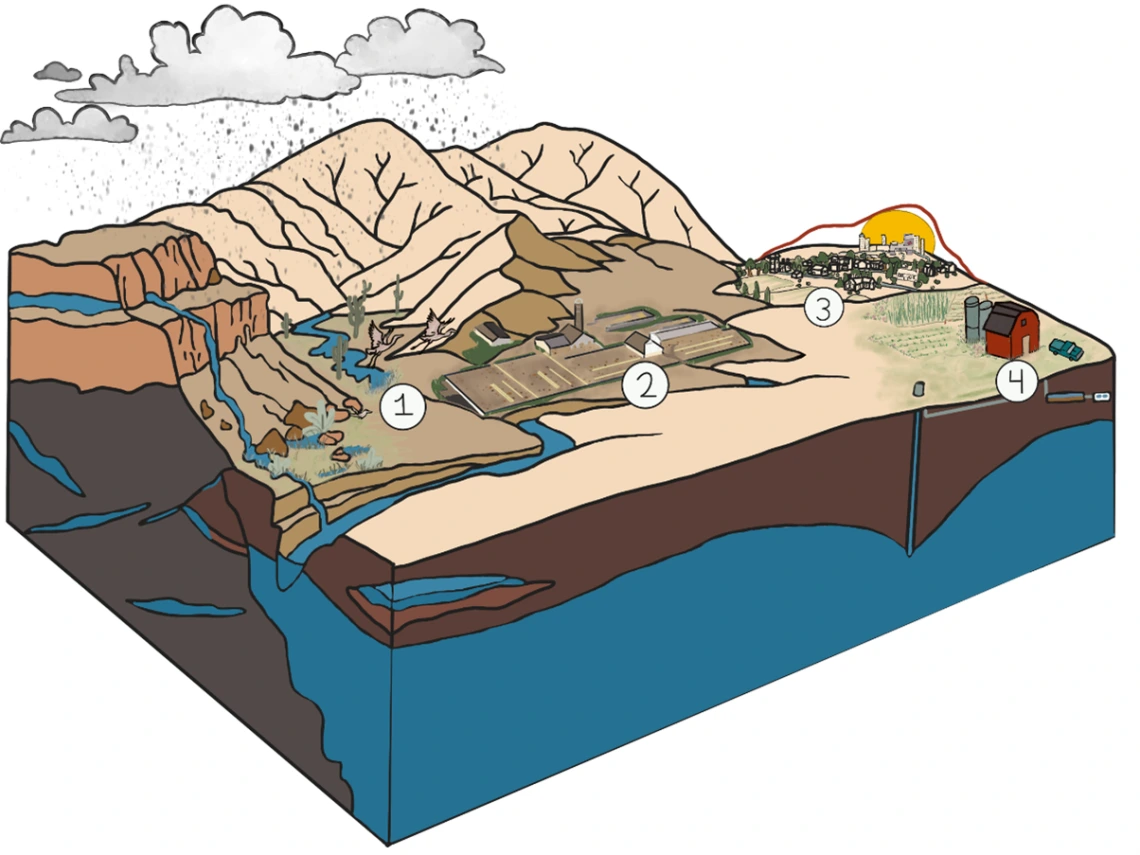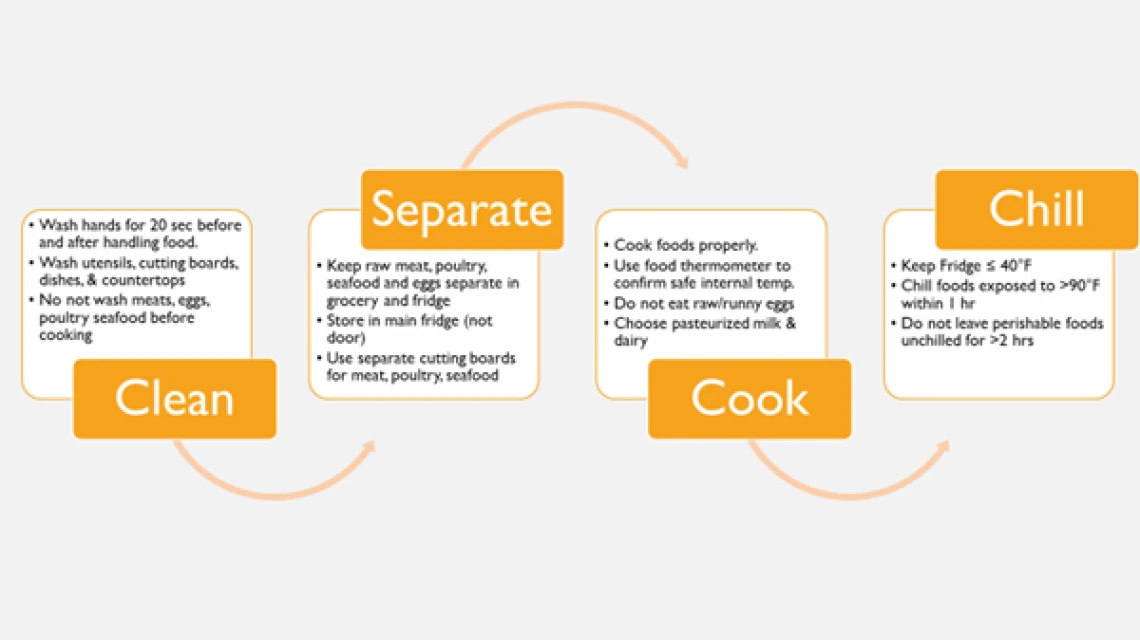Public Health Corner: May 2024

Welcome to the Public Health Corner, a section in the Southwest Climate Outlook dedicated to exploring the intersection between climate change and public health in Arizona and New Mexico! In this section, we will dive into the various health impacts of climate change that are affecting our communities and explore strategies to mitigate and adapt to these challenges.
The saying goes “April showers bring May flowers” but what does flooding bring to the Southwest? Foodborne, waterborne and enteric diseases typically start to rise this time of year, but the reasons behind this seasonality are less understood. We know these illnesses as ‘food-poisoning’ but there are often many potential sources of infection. Enteric diseases are caused by pathogens such as viruses, bacteria and parasites that cause intestinal illness with symptoms such as diarrhea, nausea, and vomiting. The figure below helps to explain potential sources and drivers of these infections. (1) Wild birds and animals are reservoirs for enteric pathogens. Climate change can cause ecological shifts in their habitats and movement, facilitating the spread of these pathogens through contamination of water sources and food production areas. (2) Farm runoff can result in contamination of water sources and adjacent lands. Higher temperatures may also indirectly influence the growth and survival of these pathogens in livestock, increasing pathogen loads during the growing and production of food. (3) Higher enteric diseases in the early summer months could be due to behavior changes due to enjoying more days outside at a picnic (with undercooked BBQ chicken!) or increase the chances of contact with contaminated soils or infected livestock and pets. (4) Wider contamination from pathogens in the environment can infiltrate water supplies, and many waterborne outbreaks have occurred following extreme precipitation events. Enteric diseases have been associated with increasing temperatures as well as precipitation events, and most predict that enteric diseases will increase with climate change.
CLIMAS researchers Drs Erika Austhof and Heidi Brown are exploring what the combination of weather events means for health in the Southwest. One project explores drought conditions prior to extreme rainfall events and the association with enteric infections. We found that the conditions prior to rainfall matter, and are different depending on the pathogen. For example, the greatest risk for Campylobacter infections is for precipitation following wet conditions whereas the greatest risk for Salmonella is for precipitation following drought conditions. Both of these infections are commonly associated with undercooked meat (poultry, beef), raw milk, and contaminated produce or water.
So, what can we do to protect ourselves and our loved ones from enteric infections? Remember the four basic steps for food safety: clean, always wash your food, hands, counters, and cooking tools; separate, keep raw foods to themselves; cook, foods need to get hot and stay hot; and chill, put food in the fridge right away. Public health departments use surveillance data to detect food and waterborne outbreaks in your county, and through studying the association between weather and these infections we can figure out how populations with an increased risk of infection become ill and project disease burden due to climate change. These strategies will help inform planning and response strategies for public health, keeping you healthy during extreme flooding and precipitation events in the future.


